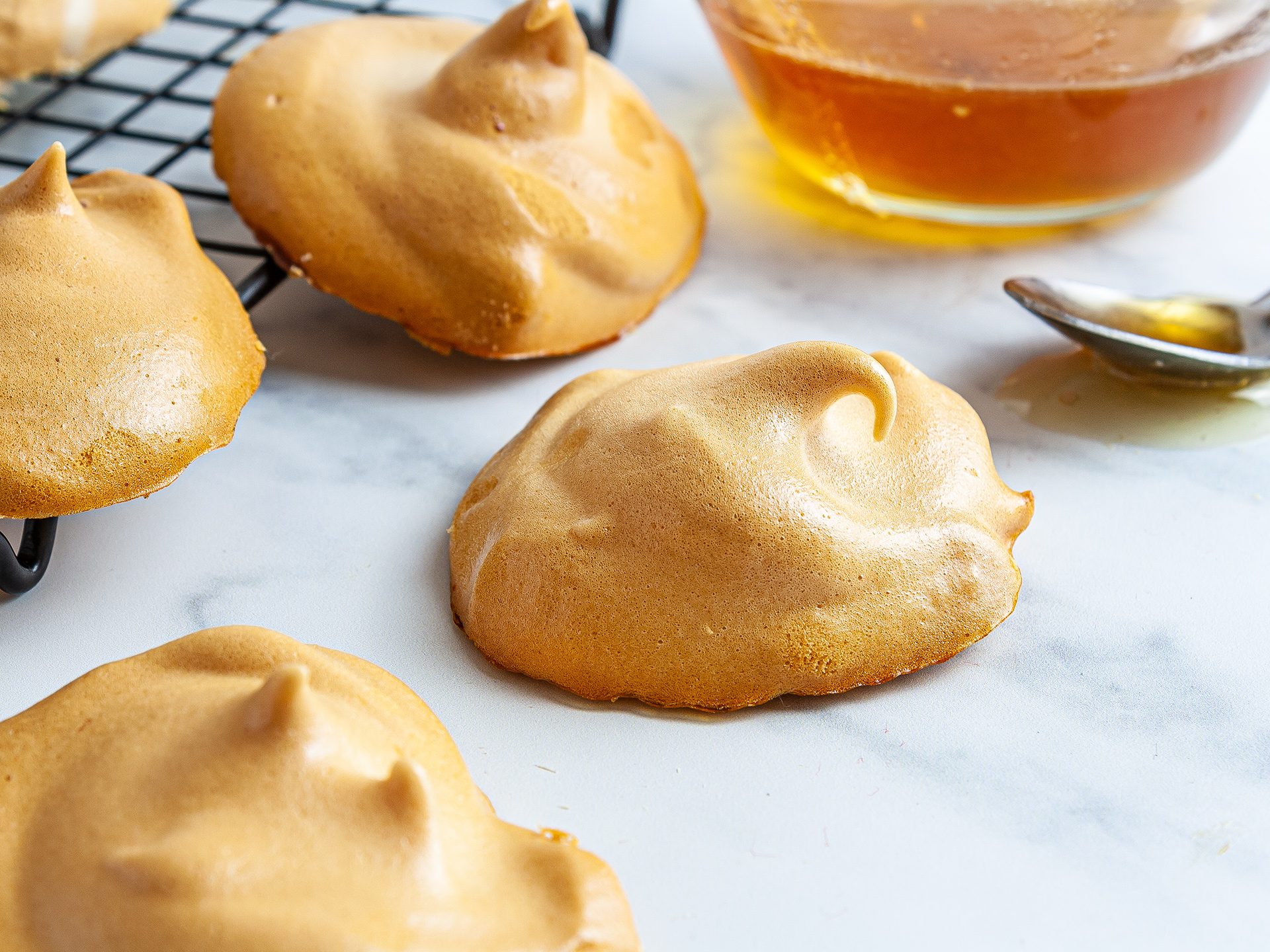Meringues are a central element in many classic bakes, like macarons, pavlova, Montblanc, and Eton mess. The traditional recipe uses sugar and egg whites, but we would like to propose a different variation: honey meringues.
Honey merengues are a bit different from the traditional ones. They are more flavourful, a bit stickier, and take on a beautiful caramelised colour. There are a few advantages in using honey instead of sugar when preparing the meringue frosting:
Honey has slightly less sugar content.
Raw organic honey is less refined and more nutritious.
You can get very different results, depending on the quality of honey you use, opening the door to flavoursome experimentations.
Honey contains 7% fewer sugars than white sugar. Moreover, raw organic honey carries good amounts of health-boosting antioxidants, which plain sugar lacks.
Every little helps when it comes to healthy eating, but our primary objective in this recipe wasn't eliminating sugars. If you wanted a sugar-free meringue, you would use erythritol instead of honey. We tell you how to do that in the tips at the bottom of the page.
Instead, the best thing about meringues made with honey is the flavour. The egg white is almost tasteless, and that's why traditional meringues are quite bland. With this recipe, you can get much tastier and exciting results, depending on the type of honey you select.
You could use fruit-based honey to add a refreshing summer flair to the meringues or go for something classic, like organic acacia. You could even use the super-healthy manuka honey, and enjoy its many benefits[1].
Or maybe you want to go all out and impress your guests. Then, buy a "best honey of the year" at your local market. We found one made from lavender, with traces of lime and passion fruit. The best honey we ever had! Imagine bringing some of that marvellous flavour into your meringue-based desserts... success is guaranteed.
Whatever honey you choose, we promise you will love the results. Just follow our easy instructions below, and you'll have tasty homemade meringues in no time!
Should the eggs be cold or at room temperature for meringue?
We recommend you use cold eggs when you have to separate the yolks from the whites. However, the egg whites should be at room temperature when preparing the meringue batter.
This is because cold egg whites don't whip as fast and fluffy as warm ones. Also, you can incorporate the honey better if the eggs are at room temperature.
To bring your egg whites to room temperature, you can either leave them on your kitchen top for 30-40 minutes or place the egg bowl into another bowl filled with lukewarm water and leave it to warm up for 5-10 minutes.
How can I make these meringues vegan?
Meringue use eggs, and therefore are not vegan. But there's a byproduct of chickpeas you can use to make vegan meringues. It's called aquafaba - the liquid you find in chickpeas cans.
Beaten aquafaba produces a foam similar to egg whites, making it suitable to make a vegan replacement to things such as meringues, or sponge cakes.
Check out our vegan macarons recipe where we show you exactly how to prepare this vegan egg white replacement. Then, come back to this recipe and follow the rest of the instructions and voila, you have vegan meringues.
How can I make the meringues sugar-free and keto?
Although honey has around 7% fewer sugars than white refined sugar, it's not suitable for people on keto diets, or folks suffering from diabetes.
That's why meringues and the bakes that use them never make it on low-sugar diet menus. Luckily, making sugar-free meringues is easy.
Just follow our recipe above and replace the 40g (1.4oz) of honey we used with 50g (1.7oz) of erythritol.
Erythritol is a zero-carbs sweetener. On an equal-weight basis, erythritol is 70% as sweet as plain sugar. But although our tongue perceives its sweetness, our system cannot digest it. Therefore, virtually no carbs get metabolised, and there is no increase in blood sugar levels[2].
Are meringues healthy?
Meringues are not that healthy, unless you make zero-sugar meringues using erythritol.
Traditional meringues have a mountain of sugars. Even if our honey meringues recipe above has one third of the sugars than the classic recipe, it cannot be considered as a healthy treat.
There are three good news for you, though:
You can have meringues occasionally without feeling too guilty. How often you ask? If you are following a healthy diet and you want to treat yourself once every two weeks with a few meringues, your body won't even flinch.
You can make zero-sugar meringues by using erythritol. Read the FAQ above for instructions.
This recipe is quite the exception on our website, as the vast majority of our bakes have very few sugars, and often no added sugars at all. Discover all our low-sugar recipes here!
How to store these meringues?
If preserving the crunchiness of meringues is critical to your recipe, then you should consume/use them within a day.
Meringues are so very delicate, and they will get soggy quickly once exposed to air and humidity.
You can try to extend their crunch by a few days, by storing them in an airtight container as soon as they are cold to the touch. Avoid stacking them if possible, or at least interleave them with parchment paper.
If the recipe you are following requires dipping the meringues in cream, like the Montblanc, the meringues will get soggy anyway, so you don't have to stress too much about it.
Note that well-stored meringues can be edible for up to a week, but they likely won't be as crisp as on their first day.
We suggest you don't eat them after a week, as meringues contain animal products (eggs). If you make vegan meringues using aquafaba, they can keep 3-4 days longer.
Why my meringue won't stiffen?
If the meringue batter hasn't formed firm peaks, it's because there aren't enough stable air bubbles in the mixture or because the honey - or sugar - hasn't been wholly incorporated into the egg whites.
To avoid these problems or to fix a soft meringue, make sure there are no egg yolk residues in the egg whites and add an acidic agent like lemon juice or cream of tartar to the batter to stabilise the mixture.
Moreover, start whipping the whites at very low speed and slowly increase as they become frothier. It should take about 5 minutes for the egg whites to whip into a firm meringue so make sure you beat them long enough.
Finally, we recommend you add the honey a bit at a time - just a spoonful will do - into the egg mixture. This way, the meringue batter won't get heavy and dense too quickly eventually collapsing.
Ingredients
| Large Egg Whites | 2 |
| Salt | 1 pinch |
| Cream of Tartar | 1/4 tsp |
| Vanilla Extract | 1/2 tsp |
| Raw Honey | 40 g |
Step 1
Before you start, make sure the egg whites are at room temperature as this way they will whip faster and to a higher volume.
In a bowl, add the egg whites and a pinch of salt and start to whip them using a hand mixer or stand mixer.
Begin at the lowest speed and then gradually increase as the whites become fluffier.
When the mixture looks frothy, add the cream of tartar to help stabilise the meringue.
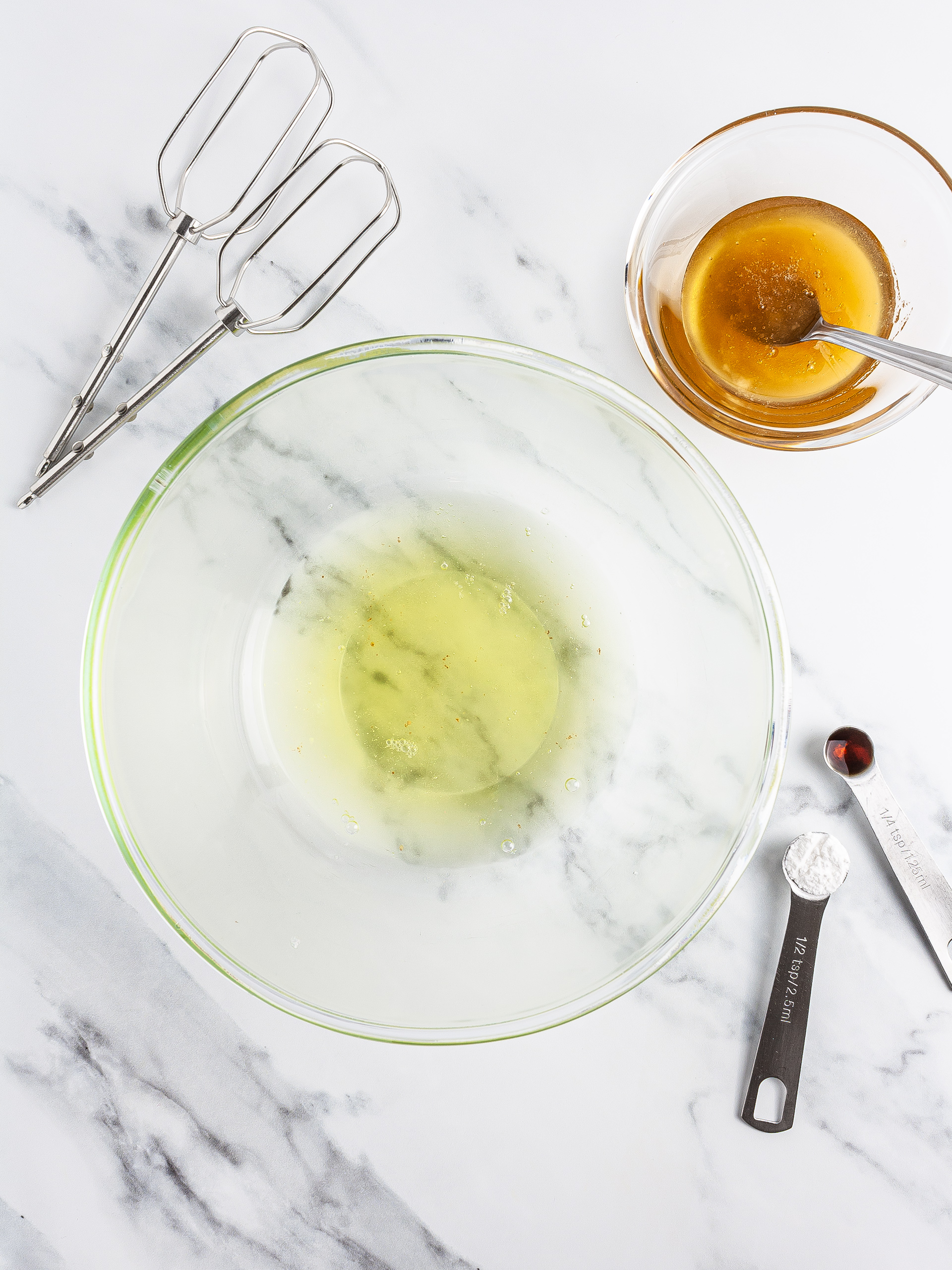
Step 2
When the whipped whites form very soft peaks add the vanilla and then the honey.
You don't want all the 40 g of honey at once. Rather add a spoon at a time and then whisk for 10-15 seconds to incorporate it well into the egg whites. Repeat until you finish all the honey.
Keep beating the meringue mixture for a few minutes until it looks thick and glossy. It should stand up in stiff peaks when you lift the whisker.
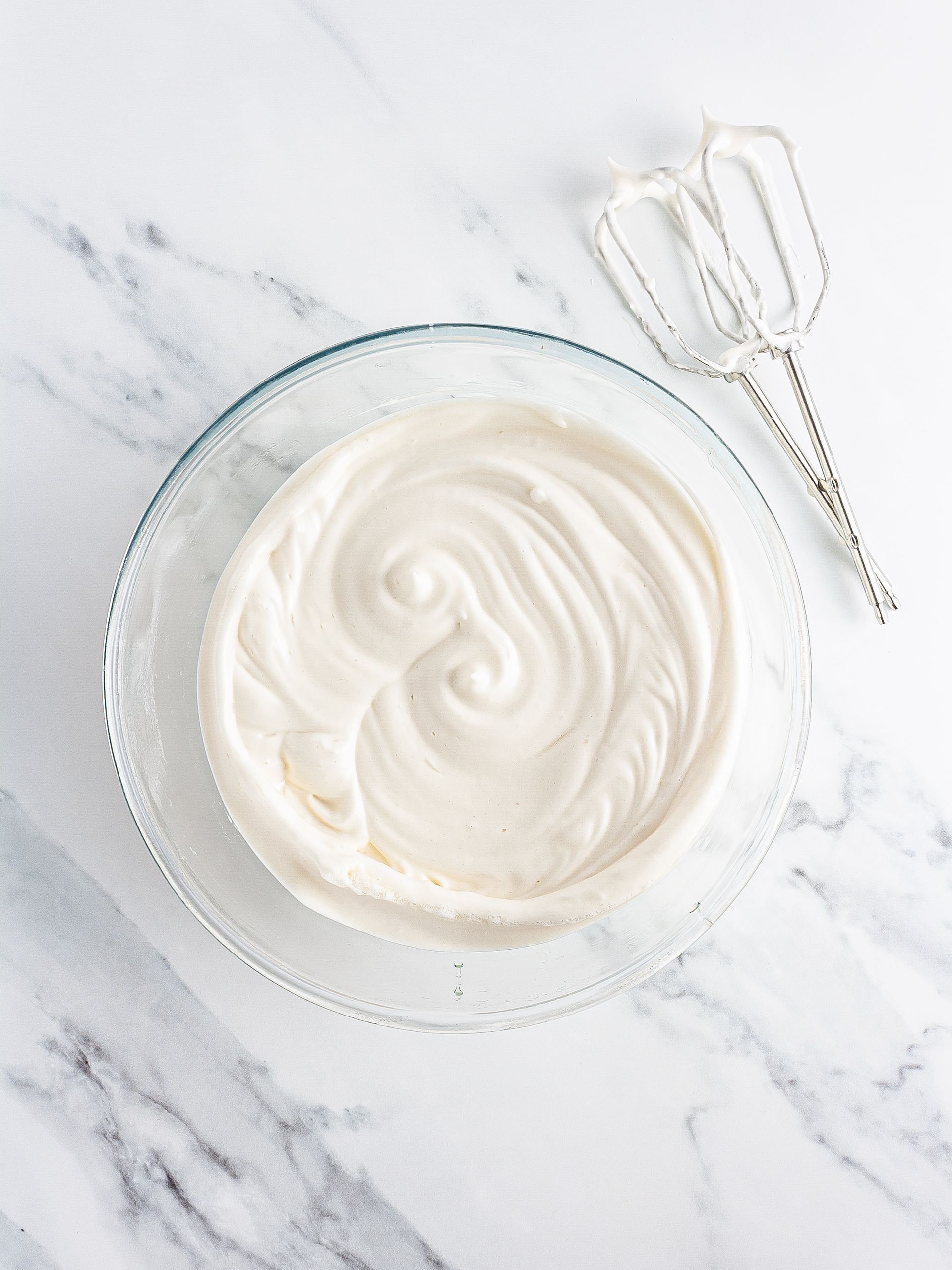
Step 3
Spoon the prepared meringue into dollops over a baking tray lined with parchment paper.
For a fancier look, you can use a piping bag to pipe the egg mixture into meringue nests or other shapes.
Make sure you space them well apart as they will spread slightly while cooking.
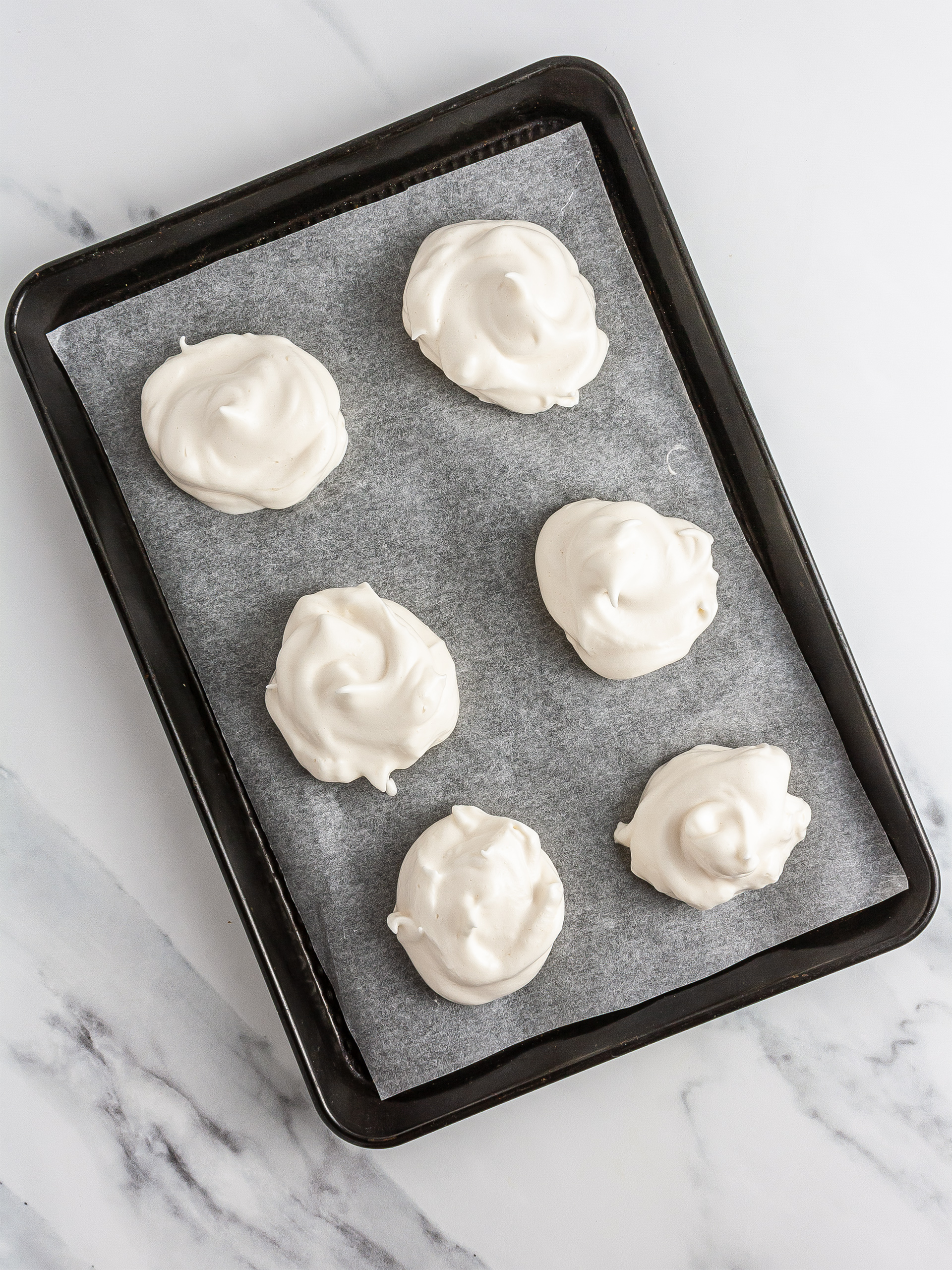
Step 4
Bake the honey meringues at 100°C (210°F) for static ovens or at 80°C (175°F) for fan ovens for 1 hour and 30 minutes. Then, increase the temperature to 110°C (230°F) and cook them for a further 15 minutes.
The meringues will turn golden on the outside as the honey gets caramelised.
Now, take them out of the oven and leave them cool down for 10-15 minutes. They are done when they can be peeled off the baking paper without leaving residues and if they sound hollow when tapped underneath.
Finally, transfer the meringues to a wire rack to cool down completely and crisp up before serving.
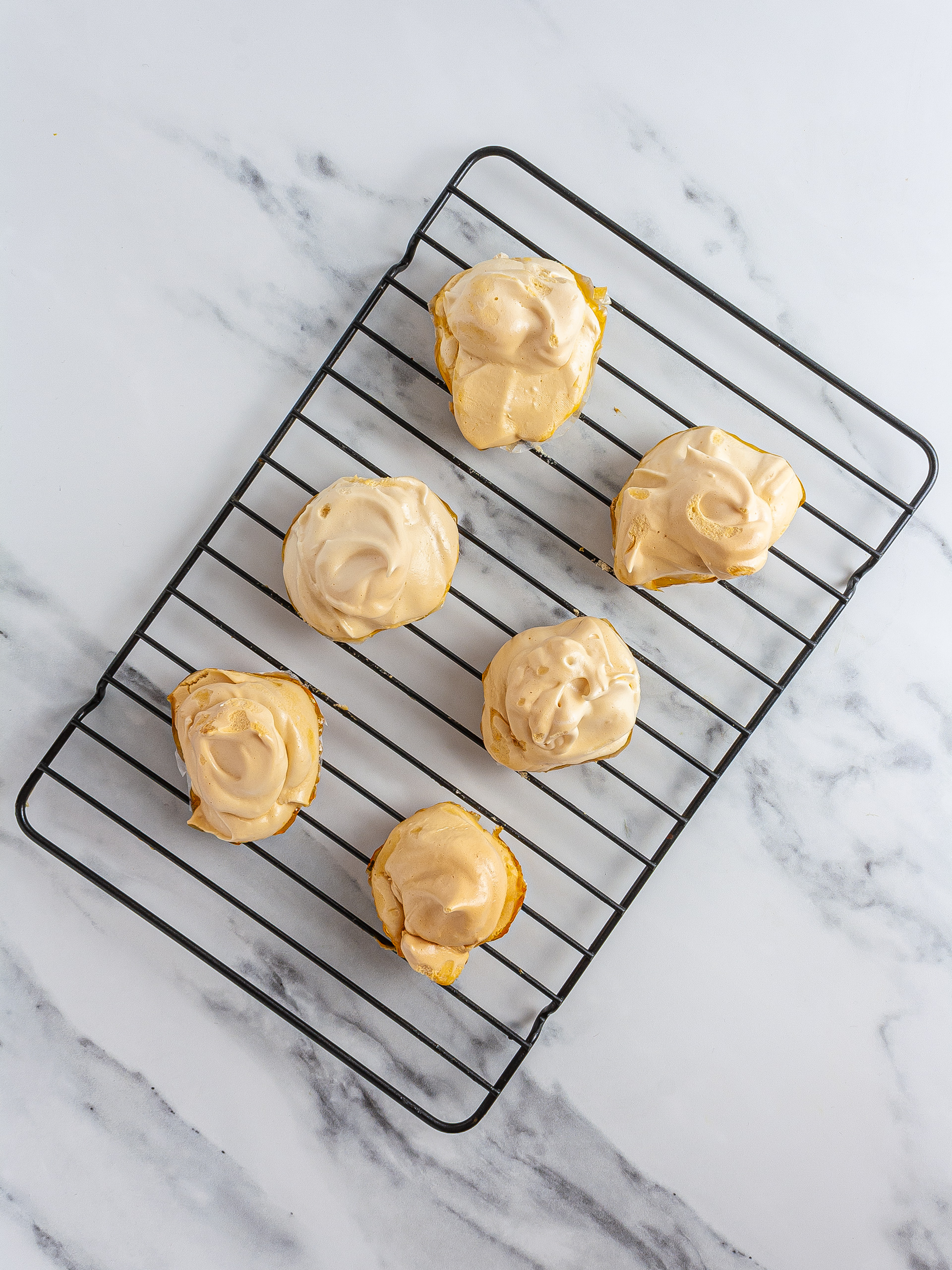
Tips
When separating the eggs, make sure you don't drop any bits of egg yolk into the egg whites, or the meringue won't whip as well.
Instead of vanilla extract, you can try almond essence or a few drops of rum for extra flavour.
